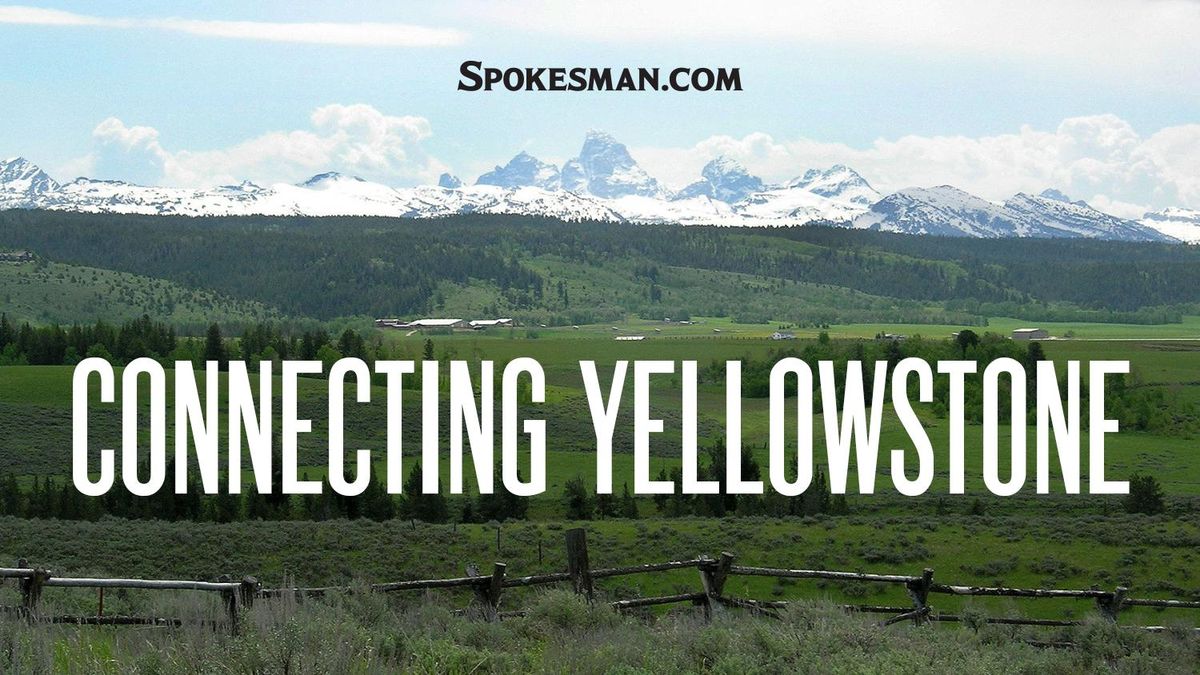Fitting the puzzle pieces: Greater Yellowstone Trail slowly coming together

The vision is a 180-mile-long separated trail from West Yellowstone, Montana, through the Teton Valley, over Teton Pass and deep into Wyoming’s Grand Teton National Park. But like an uncompleted puzzle, several key elusive pieces are missing and still being worked out.
Called the Greater Yellowstone Trail, when finally completed it has the potential of becoming one of the country’s best adventure pathways, according to Wyoming Pathways executive director Tim Young.
“I think it will be one of the more spectacular trails in the entire country with just a little bit more connectivity work,” Young said.
Much of the pathway is in place and attracting users, such as the rail trail through Island Park and the rail trail from Ashton to Tetonia, both in Idaho, and the paved trails from the top of Teton Pass connecting all the way to Jenny Lake inside Grand Teton National Park.
The missing sections remaining to be connected include a piece from West Yellowstone to Reas Pass on the Montana-Idaho border; Idaho sections between Warm River and Ashton, Tetonia and Driggs, and Moose Creek, outside of Victor, to Teton Pass; and the section from Jenny Lake to Colter Bay inside the national park.
Some of the sections are getting closer to becoming reality. Recently, the Forest Service approved nearly 9 miles of old Oregon Short Line railroad bed from West Yellowstone to Reas Pass for development into a nonmotorized trail.
“It travels along the South Fork of the Madison River. It’s gorgeous,” said Kelli Hart, one of the main movers behind the section of trail. “It’s a railroad bed, so it’s mostly flat, which is great for pathways because of that grade. It allows for all kinds of users.”
Hart is co-owner of the sports shop Freeheel & Wheel in West Yellowstone.
Another section of trail getting closer to reality is from Moose Creek just east of Victor to Mike Harris Campground, and on to Trail Creek Campground. The trail will use underpasses to get across state Highway 22/33. Work on this section is expected to begin next summer.
Also, the pathway section from Jenny Lake to Colter Bay inside the national park extending the separated path now in use has been approved. That section is expected to be built in coming years.
Other missing sections, particularly through Teton Valley, have proved more complex to figure out.
“Working south of Tetonia, we don’t have a railroad trail to work with; it went back into private property between Driggs and Tetonia,” said Dan Verbeten, executive director of Teton Valley Trails and Pathways. “That’s my section of work. What we’re trying to do right now is work with the county and the cities and private landowners to identify a route for an eventual pathway that will connect the two.”
Verbeten said the challenge is getting willing landowners on board with a trail passing through.
“We could have success with a number of landowners and then one landowner will say, ‘No thank you, not interested’ and then we will be back to searching for alternative routes,” he said.
Young is optimistic about the last 6-mile section – from Trail Creek Campground to the top of Teton Pass – eventually getting completed. He said portions, as much as 2 miles, can utilize parts of the old Jackson Highway and original wagon trail.
He hopes to tap into federal highway money to complete the surveys and planning for this section, perhaps this year. But building that section is probably years away.
Young and Verbeten hope to gather all the pathway corridor’s stakeholders in a fall meeting “to redo the (2015) concept plan and see if we can’t get the update communicated and its funding identified and prioritized,” Verbeten said.
When will all the missing puzzle pieces come together and the regional trail become a reality?
“The crystal ball is just a little bit foggy, but I’m going to say in 10 years it will be quite a ways along,” Young said. “We got to get this done so I’m not too old to ride it.”
Young, Hart and Verbeten all agree that having such a trail is more than just a fun adventure for locals to enjoy, it will be an economic boon.
“It would be such an amazing asset to this whole region,” Hart said. “A lot of people come to Yellowstone National Park for many reasons, and this would just add a couple of days. In every single one of these towns the trail would go through and intersect; it would be great for the economy.”
According to the 2015 “Greater Yellowstone Trail Concept Plan,” a study of money spent by tourists shows bicycle tourists in Montana spent an average of $75 a day and stayed eight nights, while other tourists spent $69 a day and stayed five days.
Young said the trail is already making a difference economically.
“These types of regional adventure trails like the Greater Yellowstone Trail absolutely will be an economic force and almost is today,” he said. “It will attract families and people looking for an active vacation … each town along the way would benefit by the visitors potentially lodging, restaurant meals and other types of activities. No doubt, it even extends over into Idaho Falls. People will be traveling through, so it has regional impact as well.”